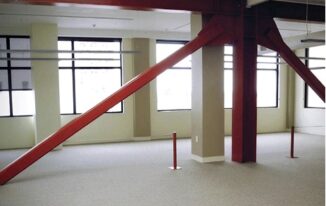The earthquake-prone systems are currently seismically reorganised, and have substantial political and social repercussions. The majority of the building stock is vulnerable to seismic retrofitting activity, even in areas long declared to be a high seismic hazard. In Italy, the last 30years have seen moderate to severe earthquakes every 5 to 10 years. The weakness of the built environment in general and building stocks in particular have been evident in this incident. Because of similar occurrences previously, the seismic hazard has been recognised for a long time in regions where seismic events occurred.
Seismic System Function
Seismic risk is a relative concept closely linked to the case at issue. A structure not vulnerable to an earthquake could be vulnerable to another type. Therefore, before performing a seismic vulnerability assessment of the system, seismic action affecting a given structure needs to be thoroughly identified. Both seismic codes characterise seismic activity using one or more architectural spectrums. They reflect the synthetic and quantitative representation of seismic activity, which is influenced by structural properties like the stiff nature of the structure in additionto the characteristics of the ground motion.
Conventional Seismic Retrofitting

Traditional approaches are divided into two categories: one based on traditional conceptual design that requires greater strength and rigidity, and the other based on mass reduction. As a consequence, the former aims to meet the unequal nature by – control, while the latter achieves the same by reducing demand. Due to the fact that seismic architecture is not traditional, both techniques may prove ineffective.
Cracks injection
Crack injection is a versatile and cost-effective method of repairing reinforced concrete (RC) structures. The ability of the adhesive material (typically epoxies) to penetrate the fine cracks of the damaged concrete under adequate pressure determines the repair operation’s efficacy. Since flexural and shear cracks are frequently continuous, the epoxy can pass freely through them. Longitudinal cracks, on the other hand, that form as a result of bond failure along reinforcing bars, are usually discontinuous and narrow. It can be difficult to repair the
steel-to-concrete bond with epoxy injection.
Adhesion of steel plates
The most common application of steel plate adhesion is in beams. Both shear and flexural strength can be increased. To minimise interfacial shear stresses, multiple thin layers of steel can be used instead of thick steel plates. It is important to provide a thorough understanding of
the adhesive’s short-term and long-term behaviour. Furthermore, precise data on adhesion to concrete and steel is needed. In order to produce a composite action between the adherents the bonding work must be performed correctly. Preventing premature debonding or peeling ofexternally bonded plates is a critical feature of construction.
Last Thoughts
Several seismic retrofitting programmes for seismic upgrading of old and substandard reinforced concrete buildings have been implemented. Since the choice of retrofit solution is determined by a number of factors, no general rules apply. To aid in the selection, the effectiveness of retrofit schemes and their interaction at the local and global levels are investigated. The main shortcomings of the system (vertical and horizontal irregularities) are addressed, as well as related modelling issues.



